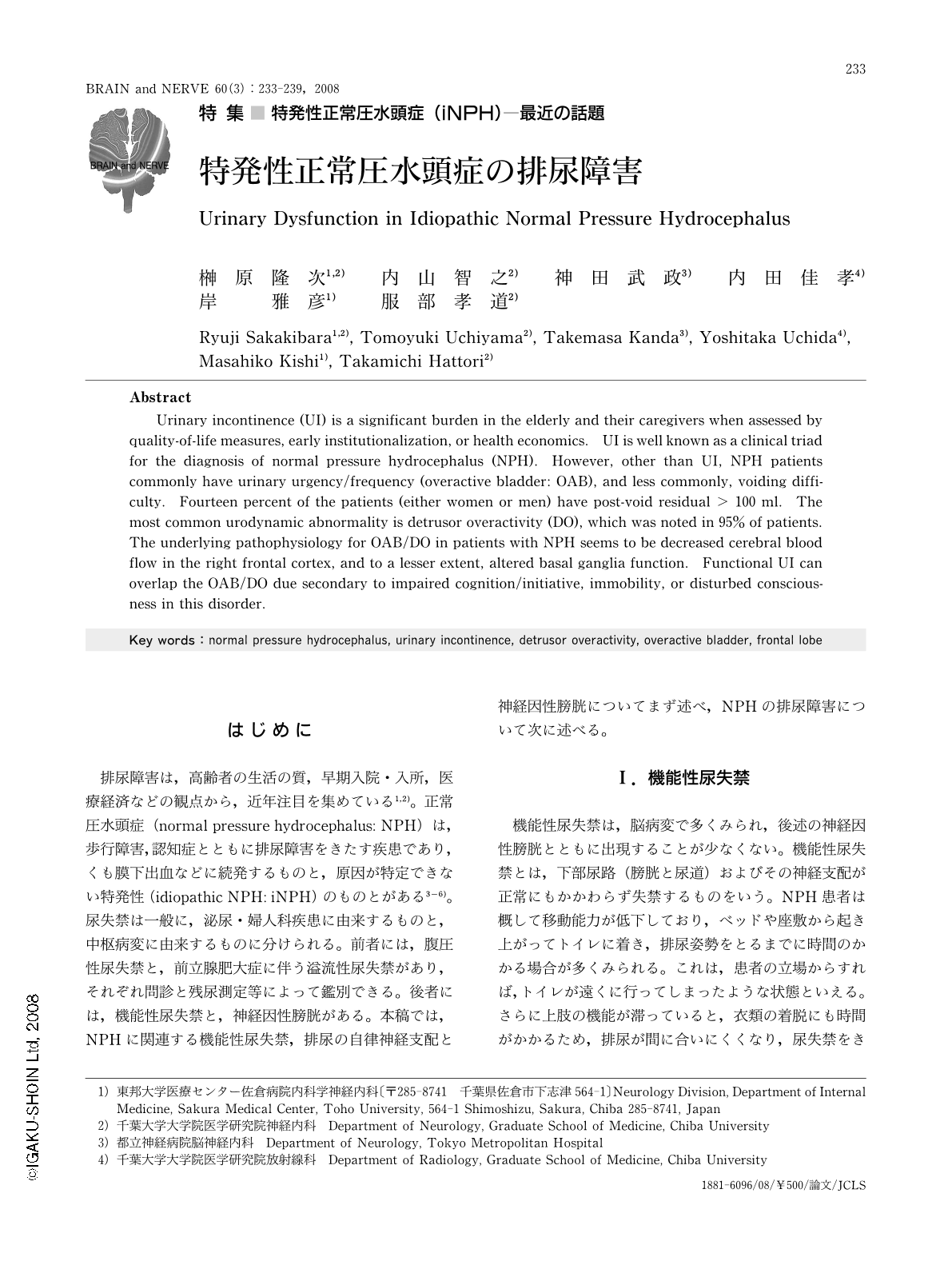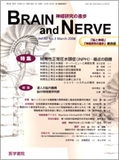Japanese
English
- 有料閲覧
- Abstract 文献概要
- 1ページ目 Look Inside
- 参考文献 Reference
はじめに
排尿障害は,高齢者の生活の質,早期入院・入所,医療経済などの観点から,近年注目を集めている1,2)。正常圧水頭症(normal pressure hydrocephalus: NPH)は,歩行障害,認知症とともに排尿障害をきたす疾患であり,くも膜下出血などに続発するものと,原因が特定できない特発性(idiopathic NPH: iNPH)のものとがある3-6)。尿失禁は一般に,泌尿・婦人科疾患に由来するものと,中枢病変に由来するものに分けられる。前者には,腹圧性尿失禁と,前立腺肥大症に伴う溢流性尿失禁があり,それぞれ問診と残尿測定等によって鑑別できる。後者には,機能性尿失禁と,神経因性膀胱がある。本稿では,NPHに関連する機能性尿失禁,排尿の自律神経支配と神経因性膀胱についてまず述べ,NPHの排尿障害について次に述べる。
Abstract
Urinary incontinence (UI) is a significant burden in the elderly and their caregivers when assessed by quality-of-life measures, early institutionalization, or health economics. UI is well known as a clinical triad for the diagnosis of normal pressure hydrocephalus (NPH). However, other than UI, NPH patients commonly have urinary urgency/frequency (overactive bladder: OAB), and less commonly, voiding difficulty. Fourteen percent of the patients (either women or men) have post-void residual > 100 ml. The most common urodynamic abnormality is detrusor overactivity (DO), which was noted in 95% of patients. The underlying pathophysiology for OAB/DO in patients with NPH seems to be decreased cerebral blood flow in the right frontal cortex, and to a lesser extent, altered basal ganglia function. Functional UI can overlap the OAB/DO due secondary to impaired cognition/initiative, immobility, or disturbed consciousness in this disorder.

Copyright © 2008, Igaku-Shoin Ltd. All rights reserved.


